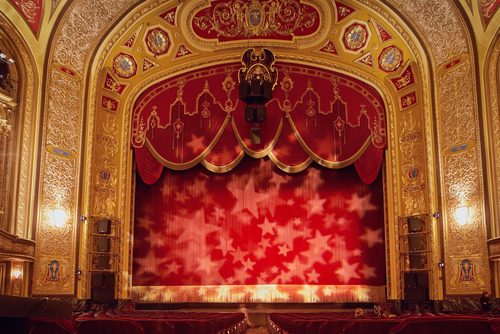Habsburg culture is back in vogue
IN HIS novel “The Radetzky March”, published in 1932, Joseph Roth traces the changing fortunes of the Trotta family amid the demise of the Austro-Hungarian Empire. “People lived on memories,” Roth writes of the era before the first world war, “just as now they live by the capacity to forget quickly and completely.” To the Trottas, life seems to be accelerating; nationalism, militarism and class antagonism are rife. Rumour runs amok. Little wonder that Vienna’s Burgtheater recently staged a version of the story. “We thought it fit the times we live in,” says Johan Simons, the play’s Dutch director.
This reinterpretation of Roth’s novel is one instance of a widespread interest in the art and style of the old Habsburg empire. Last year, for example, Arthur Schnitzler’s play “La Ronde”, set in Vienna in the 1890s, was staged in London; Federico Tiezzi, an Italian director, is reinterpreting a series of Schnitzler’s works outside Florence. “Morir”, a Spanish film released last year, was also inspired by him.
The revival encompasses painting and music too. Spotify, a streaming service, listed Serialism, Arnold Schoenberg’s 12-tone musical technique, among the “biggest emerging genres” of 2017. Egon Schiele, an Austrian artist, was the subject of a recent biopic. A current show in Liverpool juxtaposes his work with modern photography; an installation in Paris focuses on Schiele and Gustav Klimt. Nudes by the pair feature in a forthcoming exhibition at the Metropolitan Museum of Art in New York.
Habsburg culture is back. “Every few weeks I do a search on Twitter and there is an incredible benevolence about the Habsburgs,” says Eduard Habsburg, Hungary’s ambassador to the Vatican and the former ruling family’s unofficial social-media maven. “There is definitely renewed interest.”
The reasons for this burst of enthusiasm are nuanced, even contradictory. This year’s centennial of the end of the first world war, and of the empire’s collapse, is part of the explanation. So is a sense that the anxieties of the late imperial period, years of disorienting change in politics and society, overlap with today’s. “It’s a dangerous time and we need to look very closely at signs from the past,” says Mr Simons. “We do live in worrying times,” agrees Mr Habsburg; “everything is shifting, you have a feeling you are walking in a fog.”
Yet this notion of the late Habsburg period as a warning coexists with nostalgia for its glamour, epitomised by the gold leaf on a Klimt painting. Forever 21, a teen-fashion retailer, has emblazoned the lush art of Alfonse Mucha (see above), a Czech contemporary of Klimt, on its denim jackets and sweatshirts. In the same glossy vein, a joint Austrian-Czech-Hungarian-Slovak production reached farther into the past to dramatise the life of the Empress Maria Theresa in the 18th century. The mini-series—either a celebration of a Catholic, conservative epoch or a tale of female empowerment, depending on the viewer’s bias—drew big ratings throughout central Europe. In the Czech Republic, a former Habsburg territory, a whopping 47% of television viewers tuned in.
Last train to Budapest
As Philipp Blom, a historian, notes, “people tend to idealise” the Habsburg empire, even though it was “ultimately torn apart by nationalism”. No one embodies the dual nature of the Dual Monarchy’s appeal better than Stefan Zweig, an Austrian novelist with a cult following.
Zweig’s elegant society novels are set in a charmingly liberal Vienna. By contrast, his memoir, “The World of Yesterday”, is a requiem for lost cosmopolitanism. Zweig was the subject of a searing biopic released in 2016; he also inspired Wes Anderson’s whimsical film “The Grand Budapest Hotel” (2014). In December Brazil posthumously awarded him the country’s highest state honour for foreigners, 75 years after he and his wife committed suicide there, having left first Austria and then Europe.
“There is an element of escapism into the great Habsburg era,” says Daniel Seton of Pushkin Press, which has reissued several of Zweig’s books in translation, “but there also seems to be this underlying sense of tragedy.” Another figure from the late Habsburg period, Sigmund Freud, might conclude that its culture has become a canvas on which readers and audiences project their own desires and fears.

